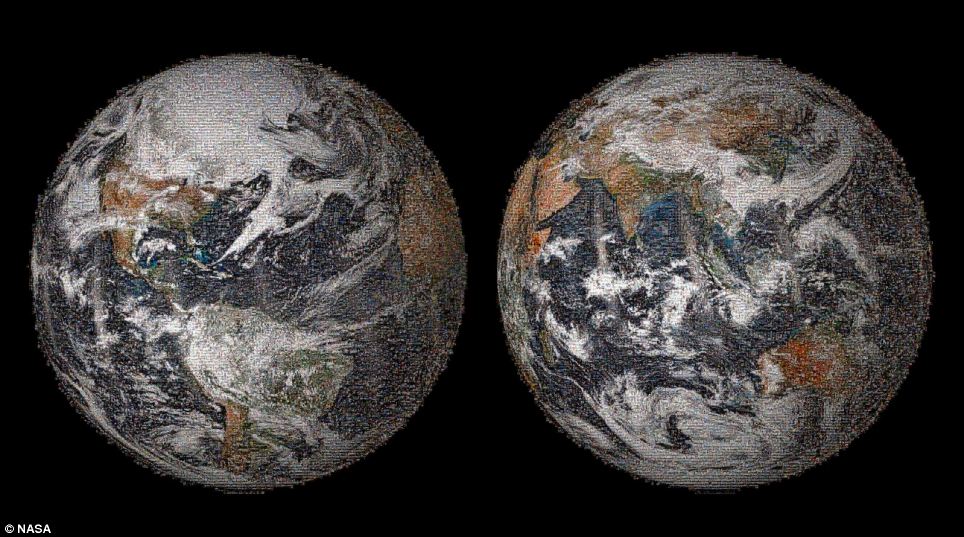Follow us !
Nasa reveals incredible interactive 3.2 gigapixel 'global selfie' - PHOTO+VIDEO
World
22:15 | 23.05.2014

Nasa reveals incredible interactive 3.2 gigapixel 'global selfie' - PHOTO+VIDEO
If you thought Ellen De Generes's Oscars selfie packed in a lot of people, get ready for a shock.Nasa has revealed a huge image of the earth made up of over 36,000 selfies.Created to mark Earth Day, the 3.2 gigapixel image can be zoomed so that users can find their own picture.The project was created to mark Earth Day, and Nasa asked people all around the world a simple question – 'Where are you on Earth Right Now?''We asked people to answer the question on social media, with a selfie.'The goal was to use each picture as a pixel in the creation of a 'Global Selfie' – a mosaic image that would look like Earth appeared from space on Earth Day.'Today NASA is releasing the finished product.The image was built using 36,422 individual photos that were posted on social media and tagged #globalselfie on or around April 22, 2014. People on every continent – 113 countries and regions in all – posted selfies. From Antarctica to Yemen, Greenland to Guatemala, Micronesia to the Maldives, Pakistan, Poland, Peru – and on. The image was assembled after weeks of curating more than 50,000 #globalselfie submissions – not all were accessible or usable – from Twitter, Instagram, Facebook, Google+ and Flickr.The result is a zoomable 3.2-gigapixel image that people can scan and explore to take a closer look at the variety of pictures. The mosaic is hosted on the Web by GigaPan.The mosaic is based on views of each hemisphere that were captured on April 22, 2014, by the Visible Infrared Imaging Radiometer Suite instrument on the Suomi National Polar-orbiting Partnership (NPP) satellite, a joint NOAA-NASA mission. The diagonal stripes in the images are due to the satellite capturing the reflection of sunlight off ocean watersThe year 2014 is a significant one for NASA Earth science, the agency said today.'For the first time in more than a decade, five missions designed to gather critical data about our home planet are launching to space in a single year.'The first, the Global Precipitation Measurement mission's Core Observatory, launched in February. Next up is the Orbiting Carbon Observatory-2 (OCO-2), launching from California’s Vandenberg Air Force Base on July 1.'NASA scientists have helped identify thousands of new planets in recent years, but the space agency studies no planet more closely than our own. With 17 Earth-observing satellites in orbit, bolstered by ambitious airborne and ground-based observation campaigns, NASA data helps scientists piece together a clearer picture of Earth’s atmosphere, land and ocean.(dailymail.co.uk)Bakudaily.az










